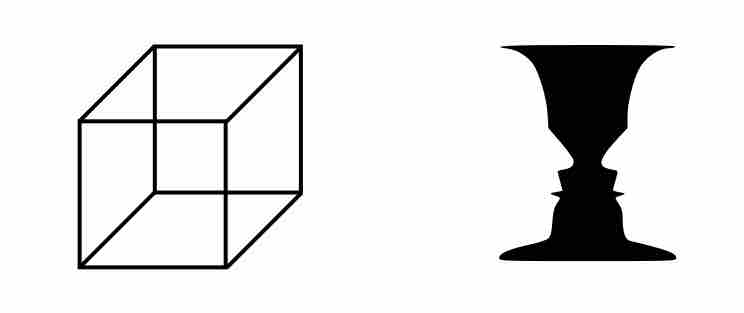Perception
Perception can have various meanings but in marketing, it is often described as a process by which a consumer identifies, organizes, and interprets information to create meaning . A consumer will selectively perceive what they will ultimately classify as their needs and wants.

The Necker Cube and Rubin vase
These are two optical illusions that illustrate how perception may differ from reality. On the left, we see a cube when in fact it is a flat image on our screen. On the right, the vase actually resembles two faces looking at each other.
Perception is a psychological variable involved in the purchase decision process that is known to influence consumer behavior. Other variables included in this consumer process include: motivation, learning, attitude, personality, and lifestyle. All of these concepts are crucial in interpreting the consumer buying process and can also help guide marketing efforts.
Selective Perception is the process by which individuals perceive what they want to in media messages and disregard the rest.
Seymor Smith, a prominent advertising researcher, found evidence for selective perception in advertising research in the early 1960s, and he defined it to be "a procedure by which people let in, or screen out, advertising material they have an opportunity to see or hear. They do so because of their attitudes, beliefs, usage preferences and habits, conditioning, etc." People who like, buy, or are considering buying a brand are more likely to notice advertising than are those who are neutral toward the brand. This fact has repercussions within the field of advertising research because any post-advertising analysis that examines the differences in attitudes or buying behavior among those aware versus those unaware of advertising is flawed unless pre-existing differences are controlled for.
Selective perceptions is categorized under two types: a low level of perception, known as perceptual vigilance, and a higher level of perception, known as perceptual defense.
Perception can be shaped by learning, memory and expectations.